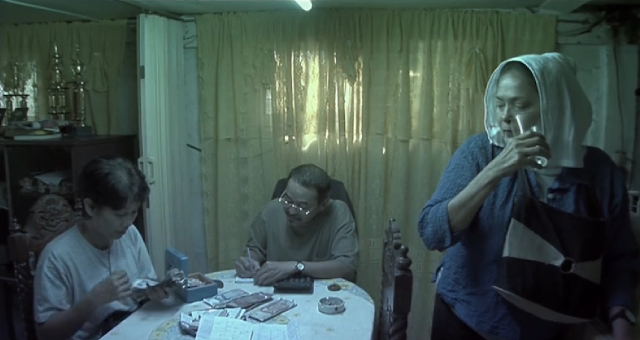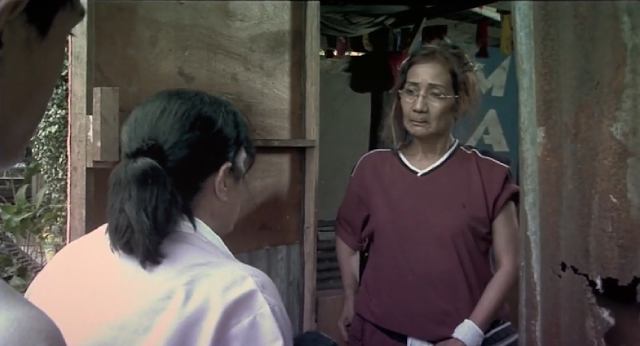The central theme of ‘Kubrador’ is in contrast with what director Jeffrey Jeturian tries to achieve visually and tonally. The notion that events are moved by perceived thoughts of luck never fully equates to a realistic narrative. For what it is, the idea of luck here is something that is both mystical and hypothetical.
But that’s not to say Jeturian wasn’t successful in trying to come up with something that feels life-like. The film’s obvious influences on Italian neorealist aesthetics can be seen immediately on how it opened, a long take following our lead in her daily routine. The camera stays with her, even on instances of mundanity that doesn’t really serve anything in the overall story. Add to that almost all shot in the film are very shaky, appearing to look like a documentary footage.
Narrative-wise, the film dissects the jueteng industry in the Philippines in the point-of-view of a kubrador (bet collector), making it feel grounded. While the crime is in itself a national issue, the conflict here is nothing but personal. The style’s emphasis on character motivation in terms of getting out or heightening his/ her respective obstacle can be observed on Amy (Gina Pareño), who at the end cannot seem to escape her own jail cell full of injected beliefs of chances.
But an even more tragic premise lies within its thesis. 'Kubrador' concludes by implying the concept of luck presented in its first two acts is a metaphorical non-sense. Amy could've been hit from that vehicle, but it could also be an insufferable path to self-destruction.
Geek out by following The Film Geek Guy:
Twitter: @matthew_escosia
Instagram: matthewescosia
E-Mail: matthew.escosia@yahoo.com















Comments
Post a Comment